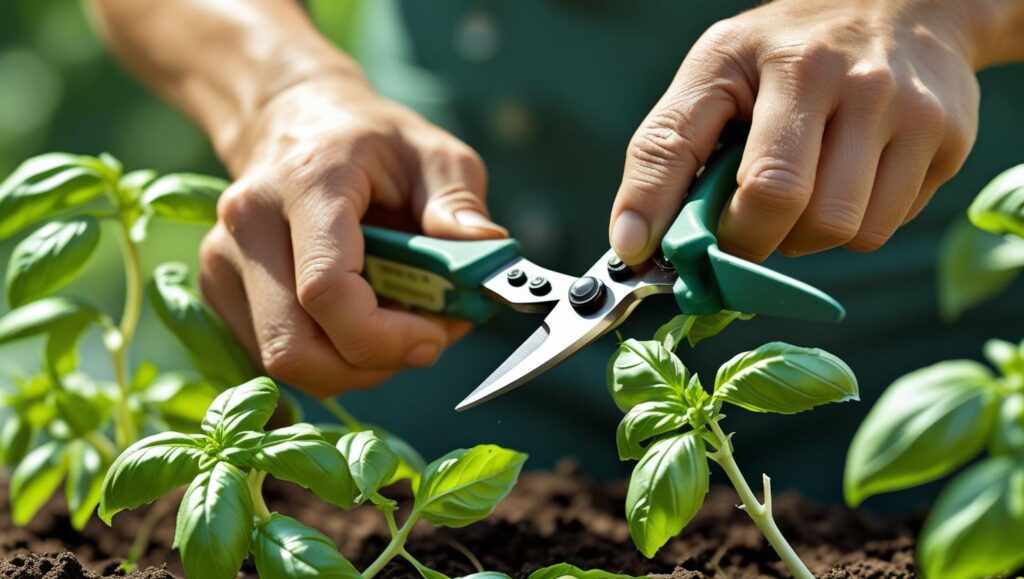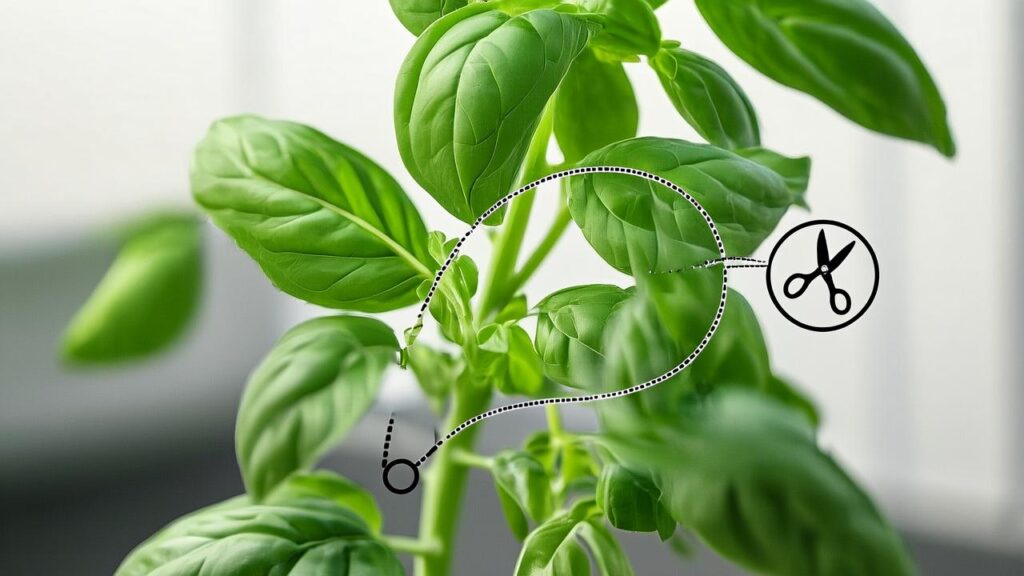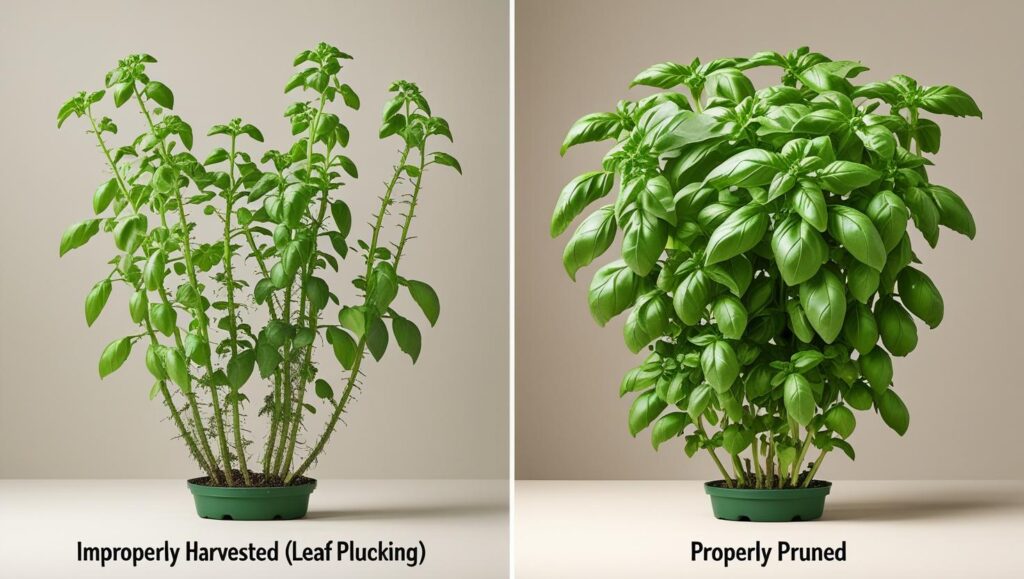Properly harvesting basil is a simple yet critical technique that encourages a plant to grow fuller and more productive, ensuring a continuous supply of fresh leaves. For gardeners and culinary enthusiasts alike, learning how to cut basil leaves from a plant correctly by pruning stems rather than just plucking leaves is the key to preventing woody growth and early flowering, ultimately extending the plant’s life and yield.

The Science of Pruning: Why Method Matters
For many, the instinct when needing basil for a recipe is to pluck individual leaves from the plant. While seemingly harmless, horticultural experts universally advise against this method. Plucking single leaves can stress the plant and often does not stimulate the new growth required for a full, bushy herb.
“When you simply pluck a large leaf here and there, you are removing the plant’s primary energy producers without encouraging it to branch out,” stated Dr. Jessica Miller, a professor of horticulture at the University of California, Davis. “The plant’s energy is still directed upwards along that main stem, leading to a tall, sparse, or ‘leggy’ plant that will prematurely flower.”
Flowering, also known as bolting, signals that the plant is entering its reproductive stage. Once a basil plant flowers, its energy shifts from producing flavorful leaves to creating seeds. The leaves that remain often develop a more bitter taste. The primary goal of harvesting is to delay this process for as long as possible.
How to Cut Basil Leaves from a Plant: The Correct Technique
The most effective method for harvesting basil involves pruning the stem. This technique promotes lateral growth, resulting in a plant that grows outward in a bush-like shape rather than just upward.
Step-by-Step Guide to Harvesting Basil:
- Identify the Right Stem: Look for a main stem or a significant side shoot that has at least three to four sets of leaves. Start harvesting when the plant is about 6-8 inches tall.
- Locate the Cut Point: Trace the stem down from the top. You will see pairs of small leaves or nodes where new growth emerges. The ideal place to make your cut is about a quarter-inch above a leaf node. This is the crucial step in learning how to cut basil leaves from a plant.
- Make a Clean Cut: Use clean, sharp scissors or small pruning shears. A clean cut minimizes damage to the plant tissue, reducing the risk of disease and allowing the plant to heal and regrow more efficiently.
- Harvest Regularly: Begin pruning your basil plant early and do it often every one to two weeks is a good rule of thumb once the plant is established. Regular harvesting trains the plant to become bushier. According to a guide published by the University of Minnesota Extension, you can safely remove up to one-third of the plant’s total height at a time.

Maximizing Your Harvest and Plant Health
Consistent and correct pruning not only provides a steady supply of basil but also contributes significantly to the overall health and longevity of the plant.
Encouraging Bushy Growth
When you snip the top of a stem just above a node, you are performing an action known as “pinching.” This removes the plant’s apical meristem the primary growth point at the tip of the stem. As a result, the plant redirects its growth hormones to the two small side shoots at the node just below the cut. These side shoots then develop into two new main stems.
“By repeating this process, you are effectively doubling the number of productive stems with each cut,” explains David Chen, a master gardener and author of “The Urban Herb Garden.” “A plant that might have produced one single flower stalk will now produce eight or more leafy branches, dramatically increasing your total yield.”

Tools of the Trade
While fingers can be used to pinch off soft, new growth, most gardening experts recommend using tools for established stems.
- Pruning Shears or Snips: Provide the cleanest cut, reducing the chance of crushing the stem.
- Herbal Scissors: Smaller and more delicate, these are perfect for navigating the dense growth of a healthy basil plant.
It is critical to ensure your tools are clean. The Royal Horticultural Society (RHS) advises wiping blades with rubbing alcohol before and after pruning to prevent the spread of fungal or bacterial diseases between plants.
Common Mistakes to Avoid
Even with the best intentions, several common errors can undermine your basil-growing efforts.
- Waiting Too Long to Harvest: Delaying the first pruning can result in a woody main stem that is less likely to produce tender new growth.
- Cutting Below the Lowest Nodes: Never cut the plant all the way back to the soil. Always leave at least two sets of lower leaves on the main stem to ensure the plant can continue photosynthesis and recover.
- Harvesting from the Bottom Up: Taking the large, lower leaves first is a common mistake. These leaves are the plant’s solar panels, essential for powering new growth at the top.
The journey of how to cut basil leaves from a plant is one of continuous care. Responding to the plant’s growth with regular, strategic pruning will result in a robust and flavorful harvest that can last throughout the growing season. As Chen notes, “Think of it not as taking from the plant, but as guiding it toward its most productive form.”
How Long Does It Take for a Money Plant Cutting to Root in Water? A Scientific Timeline
